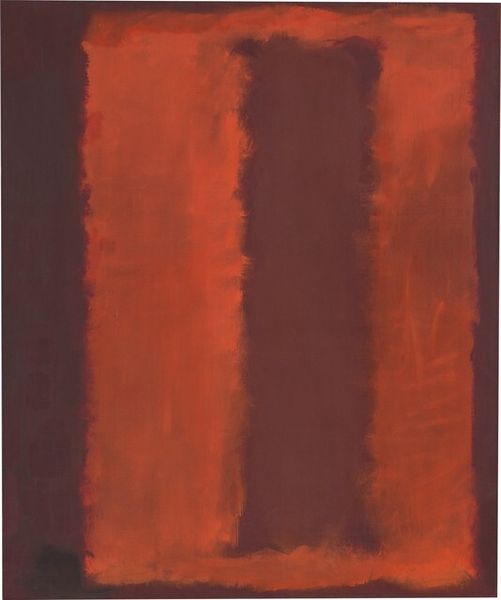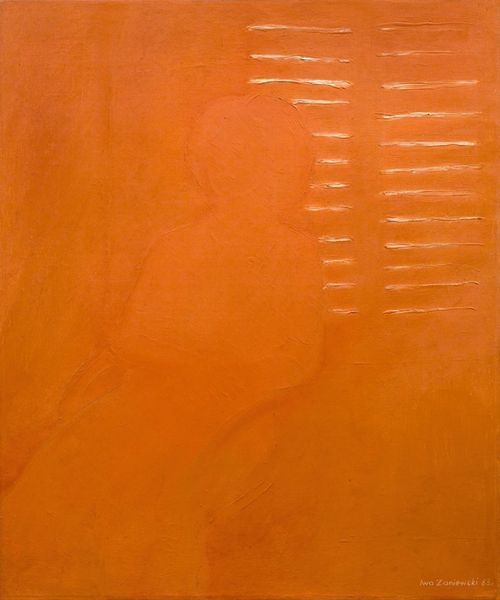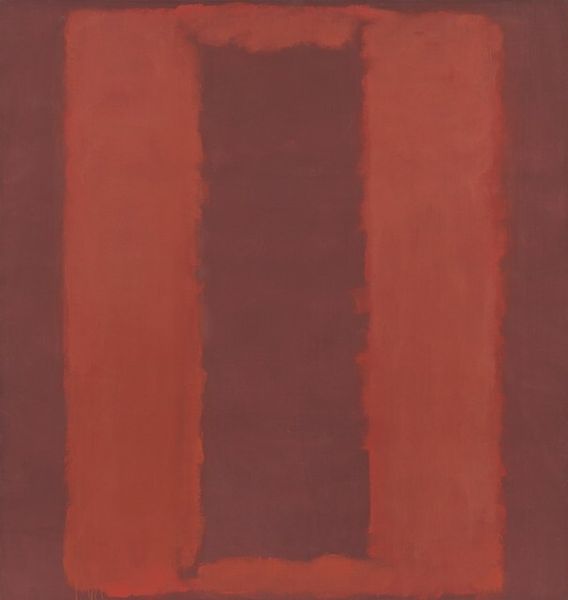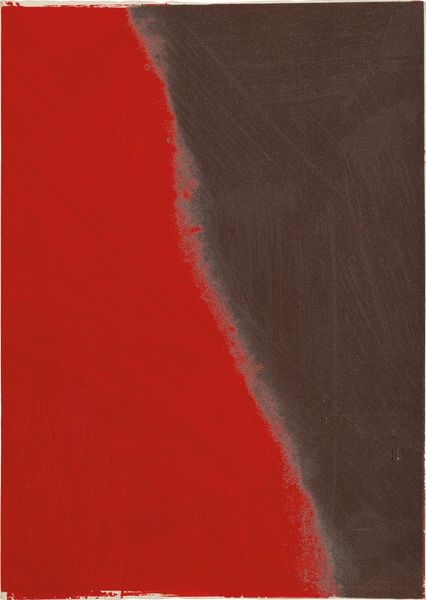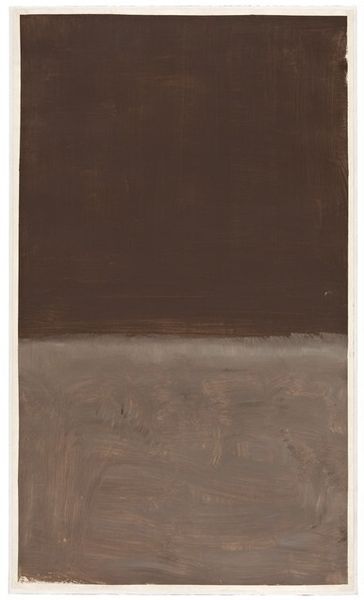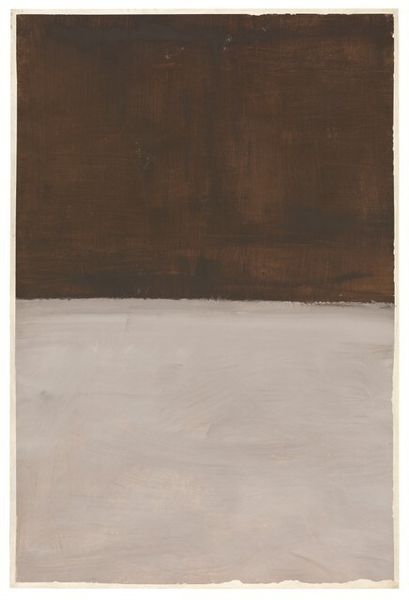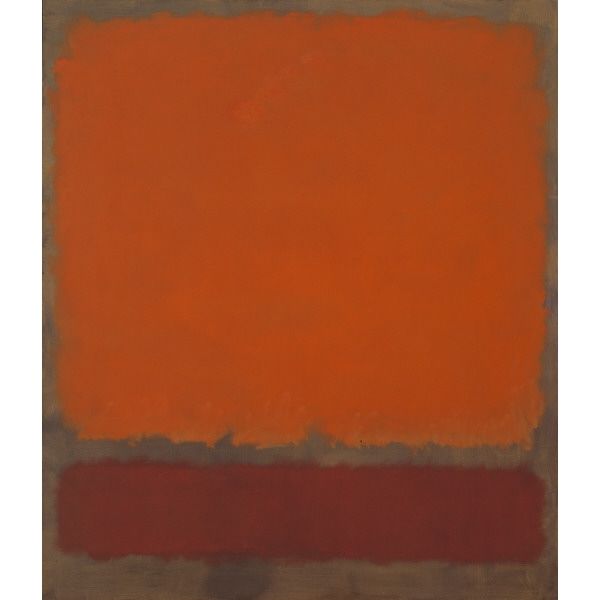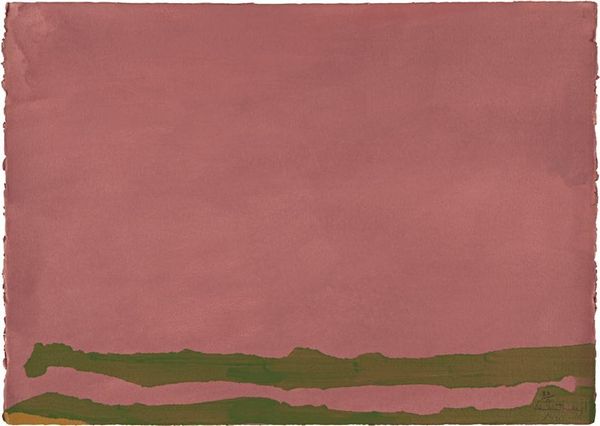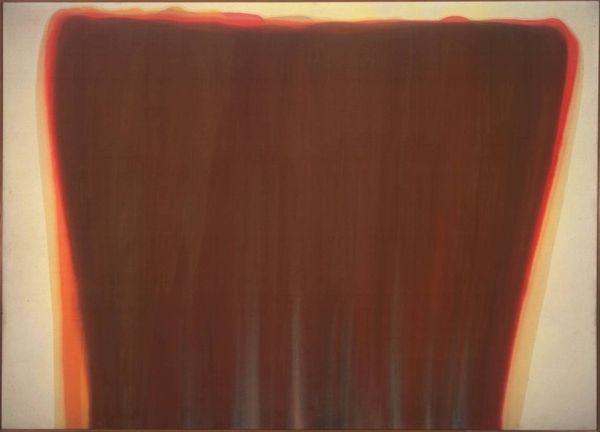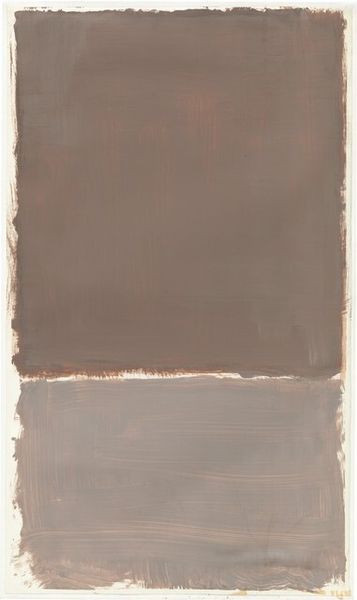
painting, oil-paint
#
abstract-expressionism
#
abstract expressionism
#
non-objective-art
#
painting
#
minimalism
#
oil-paint
#
geometric
#
abstraction
#
line
Dimensions: 69.2 x 41.2 cm
Copyright: Barnett Newman,Fair Use
Curator: Standing before us is Barnett Newman's *Onement I*, created in 1948, now residing here at MoMA. Editor: It’s startling, isn’t it? Just a single vertical band of a lighter reddish pigment slicing through a dark, modulated field. A kind of… visual caesura? Curator: Newman described it as realizing the "beginning," which explains the title. The single "zip," as he called it, represented for him an act of creation, dividing the canvas and simultaneously bringing it together. It's not simply a line; it's a presence. Think of how such upright forms are used across diverse cultures to suggest connection between worlds. Editor: I see the presence, but I’m drawn to how the texture contradicts that sense of the sublime. The rough edges of that ‘zip’, its hesitant application. The dark field itself isn’t a flat monolith. Curator: The imperfect nature is precisely the point. It emphasizes the human act of creation, the struggle for expression. It taps into an archetypal language where straightness represents the will to form or the potentiality to organize chaotic matter. The single, confident stripe stands in contrast to the field of color where minor imperfections suggest the depth and range of human emotionality. Editor: But there’s such economy. He reduces painting to almost a binary opposition, a ground and a figure in a very direct way. In some respect it feels to be doing the same sort of compositional work of traditional painting using color and line alone. Curator: You're right. Newman believed that through pure abstraction he could reach the most fundamental and universal human emotions and myths. This is why it is called Onement. He wanted viewers to contemplate our shared origins and connectedness. It makes it one of the most iconic works of abstract expressionism. Editor: Reflecting upon the interplay between that almost rusty, earthen field and that vibrating orange line—a stark formal strategy yields complex aesthetic, if not quite emotional rewards. Curator: Indeed, and considering its title, the piece challenges viewers to seek that origin, that onement, both within themselves and in relation to the world around them.
Comments
No comments
Be the first to comment and join the conversation on the ultimate creative platform.
